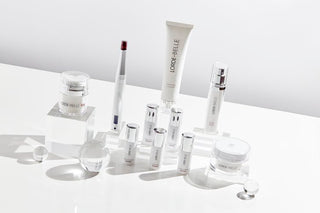No one likes to lose money! Choosing products for your skincare routine can be hit or miss without guidance, but the biggest hurdle you face may not involve picking a product that doesn’t work. You may, in fact, be buying (yes, buying!) into a well-circulated skincare myth and wasting your hard-earned cash.
Google “Skincare Absorption”
Social media platforms are great places to discover funny pet videos or new recipes, but Instagram and Doctor Internet spread far more myths than truths. For example, a wildly inaccurate yet often-referenced statistic about your skin’s ability to absorb things into your bloodstream has people believing that skin absorbs 60% of what it comes in contact with. Type “skincare absorption 60%” into a search field, and Google will offer you 1 million+ results, and the bulk of them are attempting to debunk that stat.
A Misused Source Makes a Myth Run Wild
The source for that statistic isn’t known, but a very small 1984 study seems to be the culprit. In it, researchers sought to learn how the skin absorbs contaminants in drinking water. They arrived at an average 64% absorption rate when researching the skin’s level of chemical absorption (ethylbenzene, styrene, toluene, and xylene, to be precise) and – none of which are found in skincare. This fact seems to have escaped the masses as they’ve attempted to apply it as a global rule, which it clearly is not.
Why You Can’t Always Believe What You Read
The very notion of an absorbency rate that high is easy to discredit when you think of things like hand sanitizer, which must contain a minimum of 60% ethyl or isopropyl alcohol per the FDA and would surely harm you if your skin absorbed it into your bloodstream at that concentration. Now imagine what you’d look like if you spent an afternoon splashing in the pool with your kids. In theory, you could emerge considerably larger than when you entered.
Skin’s Job Is to Prevent Penetration
You may not remember the anatomy lesson on the skin’s composition, but you’ve probably heard skincare enthusiasts and bloggers refer to the uppermost layer of the epidermis as the stratum corneum (or barrier). Skin’s primary purpose is to prevent bacteria and other nastiness from entering the body. The stratum corneum contains several layers of cells in a brick-and-mortar pattern, like a chimney, and it acts “as the body's first barrier from the external environment.”
Think of all the different substances you touch in a day. Prolonged contact with a benign substance like water can make your skin look temporarily wrinkly, but you can thank your skin for keeping most harmful molecules from invading its surface and causing permanent damage.
Get Your Money’s Worth Out of Your Skincare
Since the majority of your skincare sits on the skin’s surface, it makes sense to look for ways to get more for your money. The Lorde + Belle nano-channeling RegenPen™ helps increase your skin’s ability to absorb skincare products up to 97% by delivering key ingredients into the deeper layer of the skin. Read more about the RegenPen here. Try it with our triple-weighted HA3 Serum. It contains high, medium, and low molecular weights of hyaluronic acid, so it can plump and smooth the surface instantly while supporting collagen production in the dermis for long-term benefits. Read more about the HA3 Serum here.







